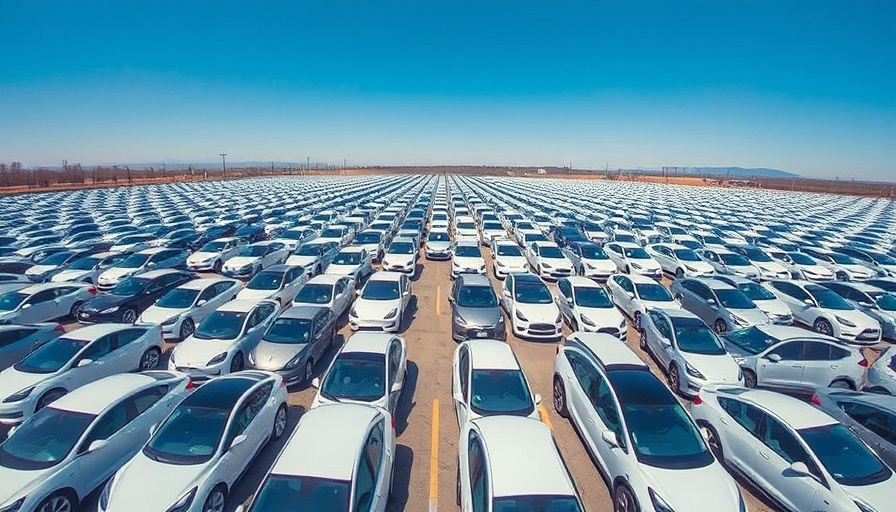
Understanding Tesla's New Transportation Permit in California
Tesla has recently made significant strides in California by receiving a transportation charter permit (TCP) from the California Public Utilities Commission (CPUC). This new permit allows Tesla to operate prearranged transportation services, but with notable limitations. Unlike traditional ride-sharing companies such as Uber and Lyft, Tesla’s TCP permits the company to use its own employees as drivers for employee transportation services, signaling the initiation of a long and intricate regulatory journey aimed at ultimately launching a fully autonomous robotaxi service.
What Tesla Can Do with the Permit
With the new TCP, Tesla is initially clearing the way to transport employees in its vehicles on a prearranged basis. This means that while they can now legally offer transport services to their workforce, expanding to the general public will require notifying the CPUC in advance. This caretaker phase reflects Tesla's cautious yet progressive step towards more extensive operations.
As highlighted in reports from both The Verge and Reuters, this TCP is essential but distinct; it does not cover autonomous testing or deployment, pinpointing a clear regulatory boundary. Tesla still lacks the authority to operate without a driver, which is a key requirement for any future robotaxi service.
The Road Ahead: Future of Tesla's Robotaxi Service
CEO Elon Musk has been vocal about his plans for Tesla's robotaxi endeavors. However, a ramp-up to these ambitions entails crossing several regulatory hurdles. Although Tesla is planning to test a driverless service in Austin, Texas, California remains a more complex landscape. Any transition to autonomous rides will necessitate securing additional permits from both the CPUC and the California Department of Motor Vehicles (DMV).
Currently, Tesla’s engagement in the CPUC’s Autonomous Vehicle Passenger Service Programs is non-existent, limiting its ability to utilize fully autonomous technology for public service. The skepticism regarding the capability of Tesla’s Full Self-Driving software further complicates the narrative, as critics note the absence of traditional safety systems like radar or lidar in Tesla's vehicles.
Comparing TCP with TNC Permits
A significant distinction should be made between Tesla's TCP and the transportation network company (TNC) permits held by Uber and Lyft. TNCs enable independent drivers to connect with passengers through an app, whereas Tesla’s arrangement necessitates that it owns the vehicles and employs the drivers—creating a more centralized method of service delivery. This difference informs how Tesla will scale its service as regulatory frameworks evolve.
Potential Market Implications and Opportunities
As Tesla positions itself to enter the ride-hailing space, market implications are profound. The company is likely to tap into the growing demand for innovative transportation solutions, particularly as urban areas increasingly prioritize sustainability and reduced vehicle ownership. Tesla’s vision could pave the way for autonomous vehicles, acting as a catalyst for broader acceptance and use of driverless technology in public transport.
Potential Hurdles Ahead
Despite the promise of innovation, several challenges await Tesla. The company faces intense scrutiny, not only from regulatory bodies but also from industry competitors and consumer skepticism. Questions remain about the reliability and safety of its self-driving technology that could impact public perception and acceptance. Moreover, as proposed timelines for launching substantial robotaxi operations have slipped in the past, expectations must be carefully managed moving forward.
Conclusion: A New Chapter for Transportation
Tesla's TCP permit marks a significant, albeit cautious, step into the emerging landscape of autonomous transportation. While the company must navigate regulatory landscapes and technological hurdles, its endeavor to reshape personal mobility continues to attract attention. As developments unfold, stakeholders across the transportation sector will watch closely to gauge the effectiveness and safety of Tesla’s innovative strategies.
Stay informed about the latest advancements in technology and transportation by following relevant tech news updates. Understanding how Tesla navigates its regulatory path could provide insights into future trends in the mobility sector.
 Add Row
Add Row  Add
Add 



Write A Comment